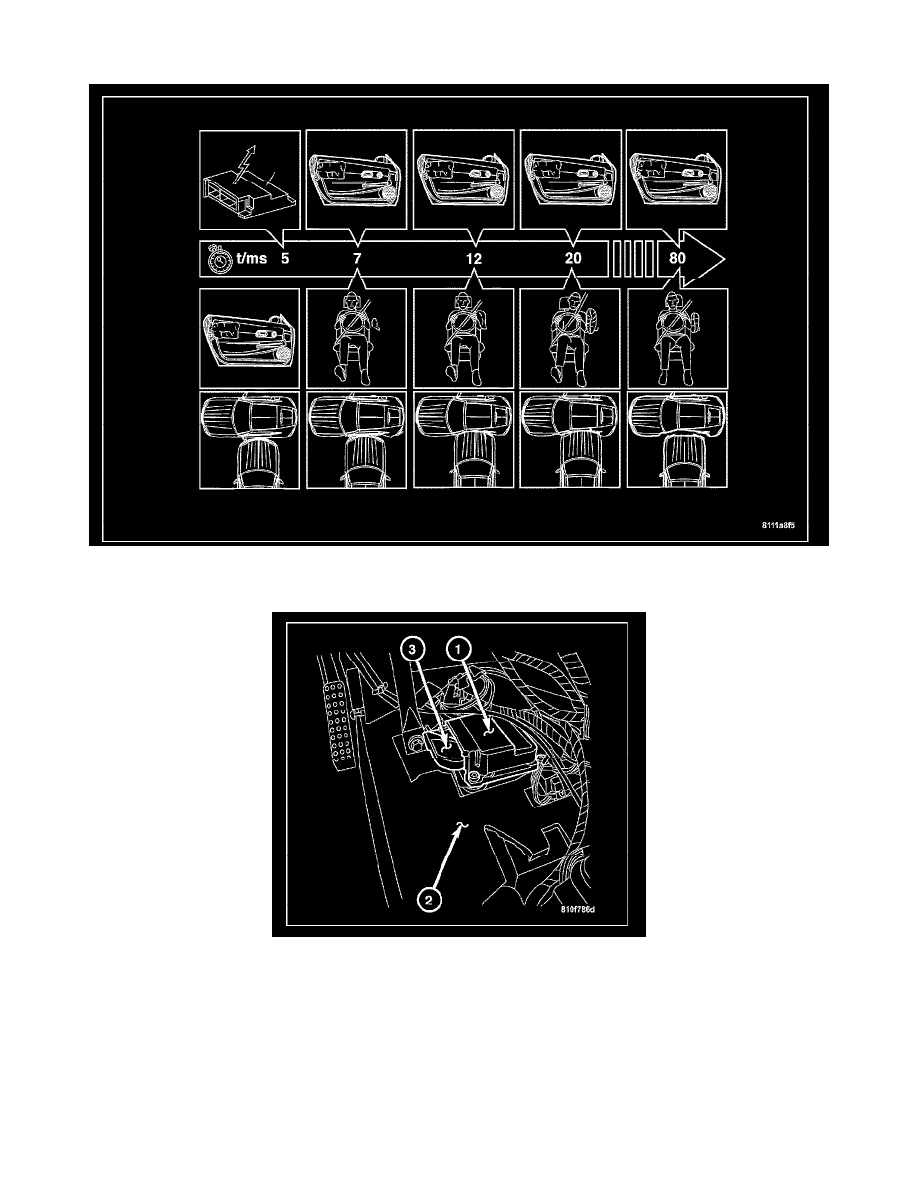Crossfire SRT-6 V6-3.2L SC VIN N (2005)

SIDE IMPACT COLLISION SRS OPERATION
When either the driver or passenger side impact side airbag sensor detects a sudden lateral acceleration which exceeds the lateral threshold value a signal
is sent to the ORC. The ORC then deploys the appropriate side airbag.
The SRS electrical circuits are continuously monitored and controlled by a microprocessor and software contained within the Occupant Restraint
Controller (ORC) (1). An airbag warning indicator lamp in the Instrument Cluster (IC) illuminates for about six seconds as a bulb test each time the
ignition switch is turned to the On or Start positions. Following the bulb test, the airbag warning indicator lamp is turned On or Off by the ORC to
indicate the status of the SRS. If the airbag warning indicator lamp comes on at any time other than during the bulb test, it indicates that there is a
concern in the SRS electrical circuits. Such a problem may cause airbags to not deploy when required, or to deploy when not required.
Deployment of the driver and passenger airbags depends upon the angle and severity of an impact. Deployment is not based upon vehicle speed; rather,
deployment is based upon the rate of deceleration as measured by the forces of gravity (G force). When an impact is severe enough, the microprocessor
in the ORC signals the inflator of the appropriate airbag units to deploy their airbag cushions. The SBT is provided with a deployment signal by the ORC
in conjunction with the driver and passenger airbags. During a frontal vehicle impact, the seat belts are used to restrain both the driver and the passenger
in the proper position for an airbag deployment. The SBT removes the slack from the seat belts to provide further assurance that the driver and passenger
